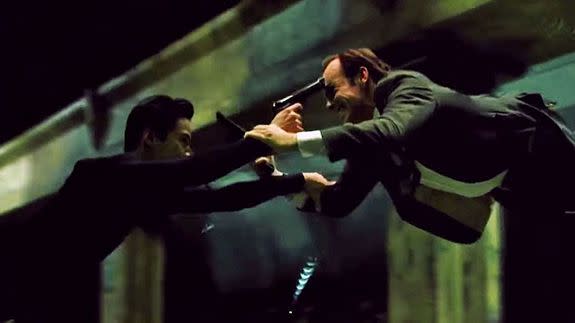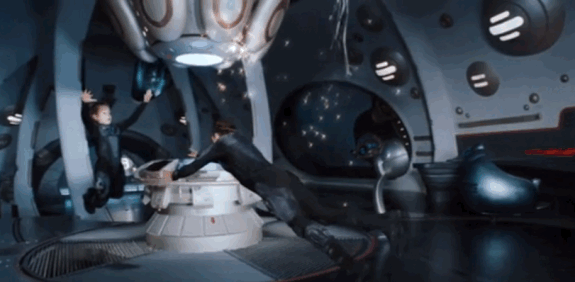The 'Mannequin Challenge' is letting us live our sci-fi dreams

The Mannequin Challenge is officially the coolest new social media trend to take over Twitter, Instagram, YouTube and Facebook, compelling people to go to great lengths to show off what's possible when you (fake) freeze time.
Although the idea almost seems obvious at this point — now that nearly everyone has a mobile camera — it should be noted that the Mannequin Challenge is actually the purest embodiment of 2016 tech allowing us to live out some of our science fiction fantasies.
It's also proof that, yes, everyone is a sci-fi geek now.
SEE ALSO: Pittsburgh Steelers win NFL social media with epic Mannequin Challenge
Think about it, and when you finally make the connection you'll probably remember that cool time freeze scene from X-Men: Days of Future Past. In the now iconic scene, Quicksilver (Evan Peters) runs through a maze of people and objects all frozen in time as the classic song "Time in a Bottle" by Jim Croce serves as the soundtrack. Yep, it looks exactly like Mannequin Challenge, only with Hollywood special effects thrown in to enhance the frozen time effect.
That magic was duplicated in this year's follow up film, X-Men: Apocalypse, this time to the track "Sweet Dreams" by the Eurythmics. Despite our familiarity with the visual trick, it was nevertheless the most stunning scene in the entire film.
Those two scenes from the hit franchise, more than anything else, are likely responsible for someone finally figuring out that whipping out a smartphone and getting people to remain motionless could simulate the time freeze effect. But there's an even earlier, more groundbreaking scene that is really at the heart of the social media trend, and it's in one of the best science fiction films ever made: The Matrix.
The film popularized the Hollywood visual effect known as "bullet time," giving us the unforgettable image of Keanu Reaves (Neo) dodging bullets in a virtual world. Yes, there were earlier attempts at this visual effect in 1998's Lost in Space (see below) and Buffalo '66, but 1999's The Matrix is the film that used cutting-edge camera work and visual effects to best pull it off.

Image: new line cinema
John Gaeta, known as a pioneer of bullet time, has often explained how the effect was done (see video, below), but it's still an one that some filmmakers have trouble making look realistic. In the case of the first Matrix film, Maeda described how he used 120 still cameras and two motion picture cameras, all operating at different frames per second, along with digital image interpolation, to achieve the stunning effect.
Back in 1999, nearly a decade before the debut of the iPhone, our mobile phones couldn't handle the task of even faking such effects, and distribution power of social networks like Facebook and Twitter were relatively far off in the future. In fact, back in 1999, portable video recording devices used removable media and looked like this. Not something your average high school student would have carried around in his pocket.
However, now that smartphone cameras are ubiquitous and social networks are the world's default distribution channels, it was only a matter of time before someone harnessed the power of smartphone cameras to mimic the look and kick off the biggest series of fake special effects we've ever seen.
And if you pay close attention to these kinds of tech-driven social media trends, you'll realize that we saw the first rumblings of the Mannequin Challenge play out in Japan's still photo trend of several years ago.
The Kamehameha/Hadouden attack, often demonstrated by Japanese schoolgirls — seemingly frozen in time and hovering, reacting to an impact — was meant to imitate a freeze frame from popular manga and anime scenes. But the Mannequin Challenge takes such social media-driven photo hacks to an entirely new level.
So as the number of Mannequin Challenge videos increase and become ever more elaborate, it's important to remember that you're not just witnessing the most sophisticated social media meme to date, you're also watching science fiction quietly invade reality, thanks to a device we all now take for granted, the lowly smartphone.
